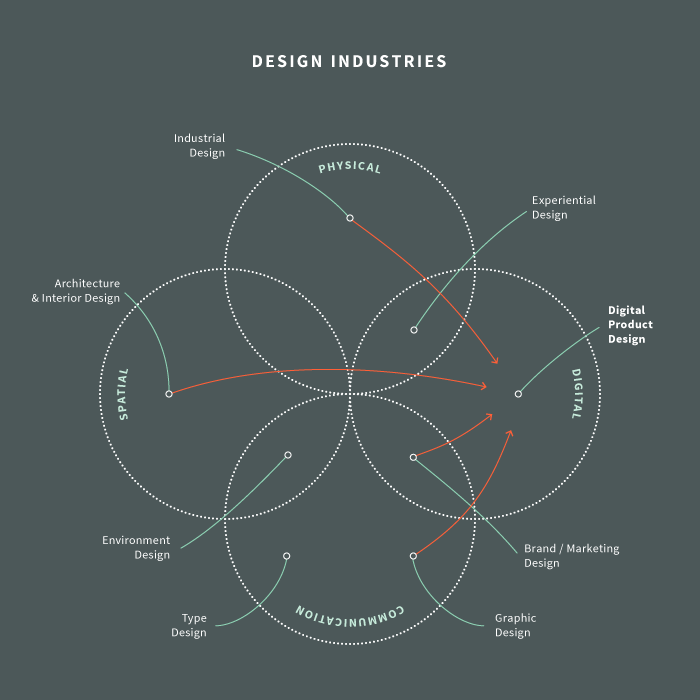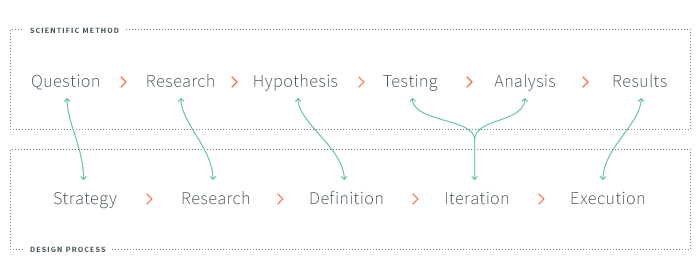What is Digital Product Design?
Reposted From Medium
I got plenty of confused looks and raised eyebrows from fellow designers when I recently changed focus from consumer-facing products to leading design at NodeSource, an enterprise product company (in Designer, that roughly translates to “ew gross”).
Aside from industry and market, this was also a move from a predominantly creative culture to one heavily focused on development, both in terms of team and the focus of our products.
As part of this transition, we have been working to define what product design means at NodeSource. Since enterprise software companies are not typically thought of as “design-minded,” I’ve gathered some thoughts on what the term “Product Design” means in the context of software — in particular software built for businesses.
What Design Is
Design is vast. There are hundreds of pretentious definitions, and many subdivisions and disciplines across industries big and small, each with their own semantics, methodologies, and beliefs.

The growth of the software industry in particular has led to many lines being blurred — new disciplines being created, old ones being merged, and general confusion on what exactly designers do. Industrial designers, graphic designers, and architects are attracted to the software industry’s increasing importance as other fields have become over-saturated, highly commoditized, or out of touch with the general public.
While we may come from different backgrounds, designers across disciplines use a similar high-level methodology.
When design is defined as a methodology for solving problems, it’s logical to compare the design process to another familiar process: the scientific method.

This, however, fails to account for the most fun and inspiring moments in design — the creative sparks and unanticipated outcomes of the process:
Spontaneity
“Happy accidents” while working through problems, or flashes of inspiration in the shower that lead to those inessential moments of delight that make using well-designed products intangibly more enjoyable.
Emotional Response
People love products for irrational reasons, despite obvious inferiority from an empirical or functional standpoint. For example, emotion is the reason people continue to buy Beats headphones despite objectively “better” competitors.
The creative components of design, in turn, lead to the worst things — not about design in particular — about creative work in general:
Unpredictability
Inaccurate time estimations because something that worked before doesn’t work this time, inconsistent results when there isn’t a flash of inspiration at a crucial moment, and unexpected difficulties doing something that was initially thought to be easy.
Subjectivity
Everyone has a favorite color, and more frequently a least favorite color. The spontaneous and emotional aspects of design are hard — if not impossible — to rationalize. In many cases, the most sophisticated data analysis can’t tell you why someone loves your product the same way we can say why an app might be more performant.
All of this is because there are no absolutes in design
There is definitely good design — beautiful, elegant, and functional. There is also bad design — ugly, complex, or unusable. And — unfortunately — there is “I wish you could make it pop,” which is what people say when they can’t tell the difference.
So, when we talk about product design as a process or methodology, it is:
Product Design, An imprecise, iterative process to solve a functional problem with a formal solution.
Now that we have a suitably pretentious high-level definition, what does a digital product designer actually do? It’s easiest to think of software design as a spectrum of tasks.
Depending on what kind of company you work for, this spectrum can stretch from the early stages of business strategy and user research all the way to visual design and front-end implementation. You could say that the larger portion of this spectrum the design team is involved in, the more “design-minded” that organization might be.

Here are the parts of the spectrum in detail:
Strategy & Research
Business Strategy and Design Research have significant overlap, making it a difficult role to define alongside functional product, sales and marketing teams.
- Market Research can include competitive analysis, product-market fit, or simply aligning Product Strategy with market trends and expectations.
- User research helps gather data about how users currently perform tasks, pain points, expectations, and opportunities for improvement through interviews, focus groups, surveys, and contextual observation.
- Stakeholder interviews are very important in enterprise software, where the perspective of management can help inform product decisions based on operational needs in addition to the needs of the user.
Product Definition
Defining a product means turning insights from design and business research into requirements for the product.
- User Personas or Archetypes make use of the perspective, goals, and psychographic traits of users to inform product decisions.
- Feature definition establishes a preliminary set of features centered around tasks that the user can accomplish with the application.
- User flows establish in detail the steps a user will take to accomplish a variety of tasks at a high level — they spell out the defined features.
Iteration
Once initial direction for a product has been established, the feature-set and flows are turned into preliminary mockups (wireframes). These are then iterated upon until a defined set of criteria are met, whether that’s internal testing, user testing, or a customer feedback loop.
- Interaction Design includes the creation of a high-level application map outlining the application structure, and low-fidelity wireframes of the application for use in testing against requirements.
- Prototyping involves either high-fidelity wireframes or low-fidelity visual designs in an interactive context to give a more accurate representation of how the application can be used to accomplish key tasks.
- Testing can be done with usability and heuristics in mind for preliminary designs, or sometimes A/B testing of design options for products or features already in use.
Execution
With the framework of the application established and the requirements set, final visual design and the development of a design language further cement usability and establish the emotional characteristics of the product.
- Visual Design brings skeletal wireframes to life. Through visual hierarchy, color, transition and typography, a great visual designer leads users through tasks intuitively and adds warmth to the experience.
- System Design ensures consistency across a product or suite of products and aligns typography, buttons and other UI elements.
- Production is the link between front-end development and design, the last step which intertwines with implementation of the product.
Consultancies tend to split these tasks across several designer roles, while product companies often rely on product management or sales to fulfill some of these duties, particularly in business or product strategy and research. Unfortunately, this often leads to designers being relegated to a purely formal or production role, which is unattractive for those interested in design as a process rather than a task.
Some common specialist or task-based roles that a product designer might have performed at large organizations include:
- Strategists work closely with customers, sales, marketing, and researchers to ensure that a product will be useful for both users and the business. Strategists find the problems that are worth solving.
- Design Researchers are a valuable link that seek the intersection of strategic business needs and user needs, values, and goals. Design researchers validate the proposed problem and begin to form solutions.
- Interaction Designers iteratively test solutions by turning features into prototypes with knowledge of common interface elements and patterns as well as insight on usability and best practices.
- Usability Experts test user behavior and adapt solutions to how people think in terms of heuristic evaluation (user expectations) and the psychology of how people use software.
- Visual & Motion Designers build upon and advance the solution to turn it into a beautiful, intuitive, and unique experience. Their goal is to provoke emotional response to a product and reinforce brand values.
What is a Designer?

Like all professions, the term “Designer” comes with a set of stereotypes and assumed traits, but there are many kinds of designers. Some will talk your ear off about the narrative of your users and your product. Some want to change the world. Some just want to make something beautiful. Overall, I’ve worked with enough that it’s safe to say that most designers:
- Are opinionated
- Value emotional response over data
- Want to make something unique
While some will work to fulfill their needs to the detriment of the product (if not the company), good designers strive to:
- Know when they’re wrong
- Balance creativity with objective data
- Prioritize user and business needs over their ego
Personalities will clash and arguments will inevitably be had, but finding balance between objective decisions and creative solutions is an integral part of both fostering a creative environment and building captivating products.
Being design-friendly is not just about having a good looking logo and slapping polish on your product. Building a design-forward organization means including design in the process— from product definition to execution — and keeping the emotional value of your product in mind when making data or feedback driven decisions.
Integrating Design
Integrating a design process into a development process can be difficult. Aside from the inherent differences in personality types, values, and goals, the design process — especially in the early phases of product definition — is not predictable or easily regimented into two-week sprints.
For an initial product design, it is common to create “Sprint Zero,” a strategic phase of defining a product that can adapt to research and early usability or prototype testing. Planning this far in advance can be difficult, but the importance of an efficient product definition phase can’t be overlooked.

Once a product is in market and being updated regularly, it gets a little easier. With a well thought out product roadmap, each feature design phase can easily be extrapolated from the development schedule. A regular cadence can be established and design can be given a flexible time-frame to prototype and iterate on product additions before development starts.

Software by Design
With design established within an organization as a holistic process — not just the formal or strategic tasks — the true value of incorporating design becomes more apparent, meaningful, and rewarding.
At NodeSource, we are creating a culture that understands the value — and limitations — of the design process. Through this understanding, we hope to change the way enterprise software is perceived by designers, and define what it means to be a “design-minded” organization as it applies to our employees and customers, regardless of industry.